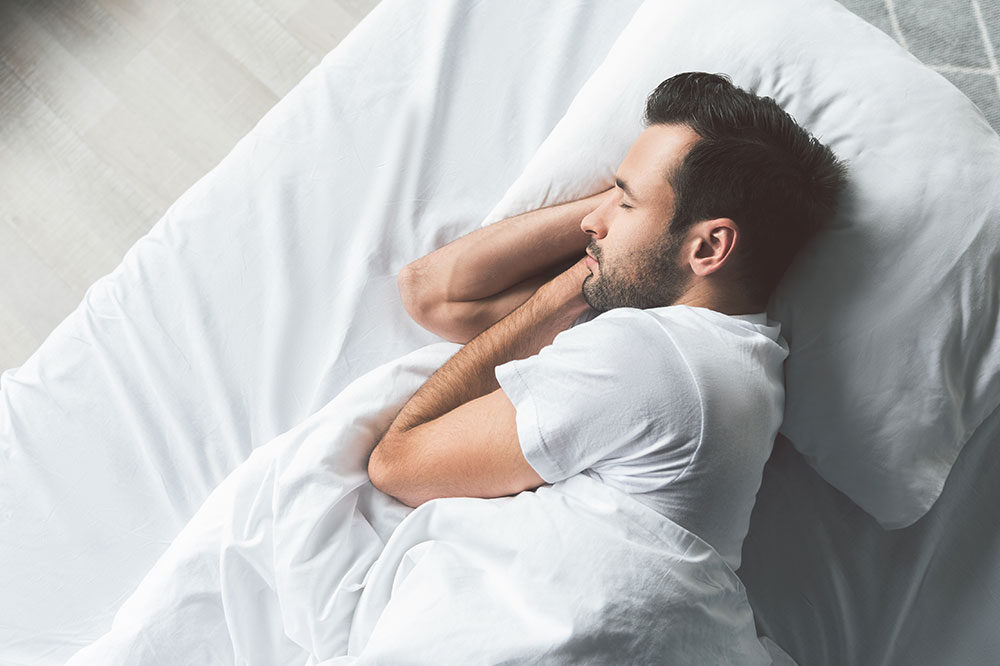Sleeping positions to alleviate neck and spine pain

Sleep is one of the most essential restful activities for the body, and this activity must lead to relaxation and refreshment. Neck and spine pain can be triggered if you do not sleep in a proper position, so follow some tips and tricks to avoid neck and spine pain. Read more about the causes of neck pain and the best dos and don’ts of sleeping positions that help with neck and spine pain.
Causes for neck pain during sleep
Some of the reasons why you may be experiencing neck pain during sleep include the following:
- Stress: Due to psychological stress, tension can arise in the neck muscles. They can get stiff and, in some cases, even inflamed. Due to the tension, the recovery slows, making the pain last longer.
- Poor support: Insufficient support for the neck during sleep can trigger neck and spine pain. That is why it is crucial to have the proper support during sleep.
- Poor posture: Sitting on a desk for hours can lead to bad posture. Not just computer screens but carrying heavy grocery bags without proper support and sitting in one position for too long are some reasons the neck and back muscles can get affected. This poor posture can lead to neck pain.
- Sleep position: Sleep position plays a huge role in keeping the neck and spine healthy. So some positions, like sleeping on the stomach, can lead to neck pain in individuals.
Let’s discuss the sleeping positions that should be followed to keep the neck and spine pain-free. You may even consult a doctor for the correct sleeping positions and continuously invest in a good mattress that keeps your spine healthy.
Various sleeping positions
There are many different sleeping positions or postures that everyone is comfortable with. Let’s examine some of these and evaluate how they affect neck and spine muscles.
- Side sleeping
There are studies that suggest that the majority of adults like to sleep on their sides. And studies also suggest that this side of sleeping may help reduce neck and spinal pain. Not just that, this position can also help reduce snoring and acid reflux.Rule one of side sleeping is that the neck and head should be in linear alignment with the rest of the body, which can help prevent neck stiffness. Due to this alignment, the body’s weight is distributed evenly throughout, and the neck does not get excess weight.
Choosing a neutral pillow that can help keep the neck aligned with the body is essential. Some people enjoy keeping two pillows under their neck, which helps keep their neck from sinking too low into the mattress. However, this rule can change for different individuals. It is recommended that the pillows not be too thick so the neck stays elevated at the right angle and not too high. If the neck is placed too high, that can trigger muscle pain.
Another trick is to use a rolled-up towel that can be put alongside the long edge of the pillowcase where you will put your neck. The towel will take the shape of the curve in your neck, leaving no space in between for any imbalance in weight distribution. Try both tricks and see which one works best for you.
- Back sleeping
This is the second most common sleeping position adults use and is most recommended for anyone with spinal pain. It has been studied that sleeping on the back with the right neck and head alignment to the body can help reduce any pain felt.Sleeping on the back requires the correct head and neck alignment with the rest of the body, as mentioned. This can be achieved by using a small pillow at the base of the neck, which helps keep the head’s position neutral. You will also need to place a pillow below your knees or thighs, which can help keep the spinal cord and the muscles around it flat and linear. If you are too fidgety with your hands, the ideal hand position for back sleepers is either folded together on the chest or resting on either side of the body.
These two are the ideal positions for sleeping, which can help relieve any neck or spine pain caused due to sleep positions. One sleeping position should be avoided entirely not to trigger any pain. This includes sleeping on the stomach with the head facing either side. This increases the weight experienced on the neck, and the recovery from this pain takes a long time. Studies suggest that compared to side and back sleepers, those sleeping on the stomach complained the most about neck pain.
There’s no solution other than training yourself to sleep on the side or back to avoid neck pain. You can try placing pillows around you so you are limited from moving to your stomach to sleep in the middle of the night.
Tips for sleeping right
Here are a few tips to follow when sleeping:
- Invest in the proper mattresses and pillows to support your spine and neck. Also, keep extra pillows handy whenever you need to adjust your neck position.
- Use heat and cold therapy to relieve neck pain before bed. You can do this DIY activity for 15 minutes every night to help you.
- Focus on exercising and stretching. This is important to keep the neck and back muscles activated and strong. Any unregulated movements in the middle of the night may lead to a muscle pull, but if your muscles work out consistently, they are strong enough to manage and recover from minor setbacks like these.



